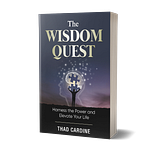This excerpt from “Taming the Anxious Beast: Kicking Anxiety to the Curb” by Thad Cardine explains the nature of anxiety by comparing it to a runaway train or a high-strung horse. It emphasizes that anxiety is a complex state of being, not just a fleeting emotion, and can have a significant impact on well-being. The author then goes on to provide strategies for managing and overcoming anxiety, including reframing negative thoughts, understanding the physiological underpinnings of anxiety, and using deep breathing techniques to calm the nervous system. The piece concludes by emphasizing the importance of taking action and relying on faith as key components in overcoming anxiety.
When a person experiences emotions, their body responds with a variety of chemical signals such as hormones and neurotransmitters. This process is called “molecular action programs,” and it describes how interactions in the world send messages to our primitive brain.
● The brain's fear response can be compared to a smoke alarm, which sometimes goes off when there's no fire, just burnt toast. This overzealous alarm system is anxiety and it misinterprets signals and causes a frenzy.
● Just like you can learn to tell the difference between burnt toast and a real fire, you can train your brain to recognize the difference between genuine danger and anxiety’s false alarms.
● You can learn to reframe the physical sensations of anxiety. For instance, a woman who used to tremble before every audience with her heart pounding and palms sweating, learned to reinterpret her physical sensations as her body's way of rising to the challenge, not betraying her, but powering her.
● Reframing involves altering your perspective on the physical sensations associated with anxiety. It's not simply positive thinking, but recognizing that physical sensations can be interpreted in multiple ways.
Understanding the physiological components of anxiety helps us recognize that our physical sensations can be interpreted in multiple ways, and that anxiety is not always a response to a real threat. By reframing the physical sensations associated with anxiety, we can manage our anxiety more effectively.













Share this post